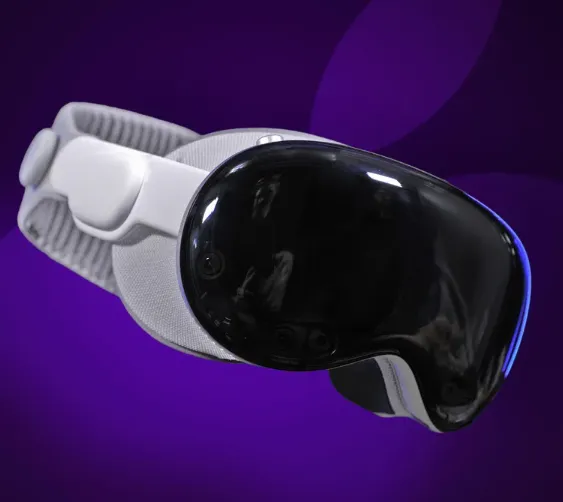Samsung Display and LG Display are making significant strides in the world of display technology with their advancements in Tandem OLED. This innovation, which stacks two organic light-emitting layers, enhances both brightness and power efficiency, setting them apart from competitors, particularly those in China. With both companies having completed extensive research and development, they are now on track to bring these cutting-edge panels to market in the near future.
Micro OLED and Its Relevance to Apple Vision Pro
One of the most promising applications for Tandem OLED technology lies in Micro OLED, also known as OLEDoS (Organic Light-Emitting Diode on Silicon). This next-generation display technology builds circuits on silicon wafers, rather than traditional glass, allowing for high pixel densities in a compact form factor. This makes it especially well-suited for augmented reality (AR) and virtual reality (VR) devices, such as Apple’s Vision Pro, which debuted with a Sony micro OLED panel. The use of Micro OLED panels in these devices demonstrates the vast potential of this technology for consumer electronics.
Why Tandem OLED Matters for Display Performance
The tandem structure in OLED displays provides several advantages, such as brighter screens, better power efficiency, and longer-lasting panels. LG Display has been leading the charge, successfully mass-producing tandem OLEDs since 2019. The second generation of these panels improves brightness by 30% and reduces power consumption by 40%. With the upcoming third-generation panels, LG aims to further reduce power usage by an additional 20%, targeting a 2026 release. These improvements are essential for devices like the Vision Pro, where power efficiency and visual performance are critical for an optimal user experience.
Samsung and LG’s Competitive Edge Over Chinese Manufacturers
Both Samsung and LG are positioning themselves as leaders in the OLED market, largely due to their focus on Tandem OLED technology. While Chinese companies such as BOE are working on similar technology, they have yet to fully commercialize it. Reports suggest that BOE may be supplying tandem OLED panels for Honor’s foldable phones, but this remains unverified. In the meantime, Samsung has strengthened its position in the micro OLED space by acquiring the US-based OLED specialist, Imagine, a company known for its expertise in micro OLED technology.
Expanding Tandem OLED Applications
The applications for tandem OLED technology are not limited to just smartphones and AR/VR devices. Both LG and Samsung are also exploring its potential in other sectors, such as automotive displays, tablets, and laptops. For example, Apple’s latest iPad Pro, which features OLED display technology for the first time, uses a two-stack tandem OLED panel provided by these companies. This shift has led to a notable change in the market, with LG’s share of OLED panels in iPads dropping from over 70% to around 50%, while Samsung’s share has risen, creating a near 50-50 split between the two.
The Future of Display Technology
Samsung and LG’s advancements in tandem OLED technology highlight their ongoing commitment to innovation in the display industry. By focusing on high-efficiency, high-brightness displays that are perfect for AR and VR applications, these companies are setting themselves apart from their Chinese competitors. As the demand for immersive experiences continues to rise, their leadership in this space could help shape the future of AR and VR displays, including devices like Apple’s Vision Pro.
